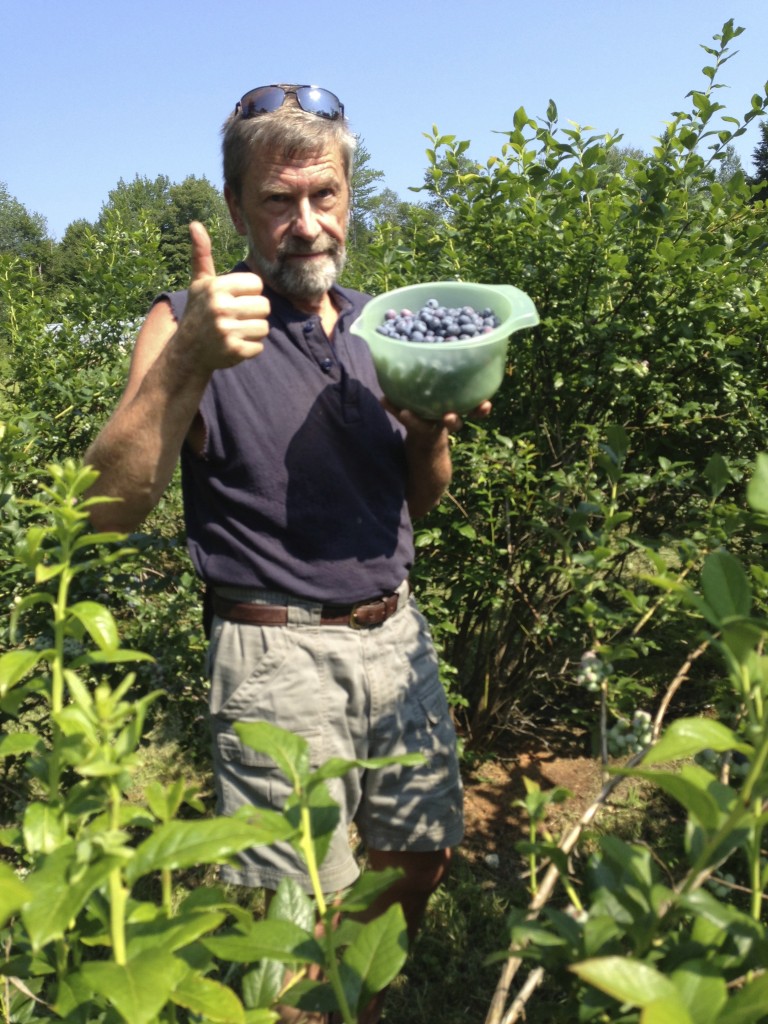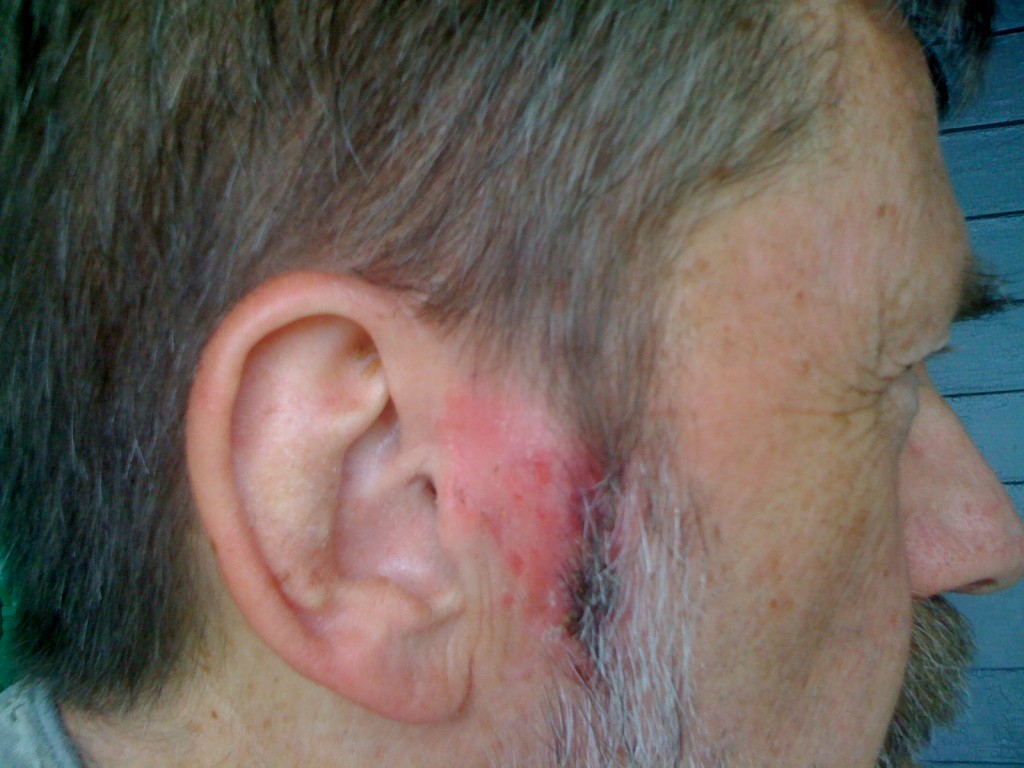My husband Barry loves being out in the sun. No matter what the season. Here’s a picture of him picking blueberries on a hot summer day.
Unfortunately, skin cancer runs in his family. Over the years, he has had several lesions removed, frozen, or burned off. He’s lucky because, so far, all have been either pre-cancerous areas called actinic keratoses or basal cell carcinomas, which are easily treated. He has all the risk factors.
Risk factors for skin cancer
- Light-colored skin, hair, and eyes — that’s my Barry.
- Family history — yes.
- Age — non-melanoma skin cancers are more common after age 40 — he passed that milestone a few decades ago.
- Sun exposure — he loves the sun.
Barry slathers on the sunscreen, so, when the FDA updated its guidelines for rating and labeling sunscreen a few years ago, it caught the family’s attention. The sunscreen industry supposedly brings in sales approaching $1 billion dollars a year, yet, according to the CDC, the rates of malignant melanoma, the most dangerous form of skin cancer, increased by 1.5 percent among men and 1.1 percent among women between 2002 and 2011. (2011 is the latest year data are available.)
Sunscreen is not the only defense against the harmful effects of the sun. When the sun is out, it’s best to limit your time in it, especially at midday. You should also wear a shirt or some kind of cover-up and a hat. And if you’ve ever been tempted, don’t visit a tanning booth and don’t use a sun lamp. They both expose the skin to concentrated amounts of ultraviolet radiation. There is mounting evidence that all of the above increase the risk of melanoma and other skin cancers.
When you put on the sunscreen, you not only need one with a skin protective factor or SPF of 15 or higher, it should also be broad-spectrum. Broad-spectrum means that it protects against two types of ultraviolet radiation — UVB rays, which burn your skin, and UVA rays, which cause skin cancer and premature aging of the skin.
FDA sunscreen guidelines
- In order to claim that a sunscreen protects against skin cancer, it must be at least SPF-15 and must protect against UVB and UVA. If the claim can’t be made, a warning must be added to the label: “This product has not been shown to prevent skin cancer or premature skin aging.”
- No sunscreen is really waterproof, so only the term water-resistant can be used and only if studies prove that the product retains its value after being exposed to water.
- The term sunblock can no longer be used because no sunscreen can completely block the sun.
Back to Barry
Barry sees the dermatologist regularly and we are always on the lookout for signs of skin cancer. Usually, it will be a “little place that has become red or a tiny sore that won’t heal.” Those are typical signs of basal cell carcinoma, the most common form of skin cancer. The other major types are squamous cell and melanoma. Melanoma is the most serious form of skin cancer.
Basal cell signs
- Persistent open sore that won’t heal
- Reddish patch or irritated area that may be crusty
- Shiny bump
- Pink growth with elevated border and crusted indentation in the center
- Scar-like area
Squamous cell signs
- Persistent red scaly patch
- Elevated growth with depression in the center
- Sore that bleeds and crusts and doesn’t heal
- Wart-like growth
Melanoma signs
- Mole with asymmetrical shape
- Uneven borders
- Variety of colors
- Larger than pencil eraser
Triggering the immune system to fight against skin cancer
About seven years ago, instead of removing a suspicious area, our dermatologist prescribed a cream with the brand name Aldara (imiquimod). It works by triggering the immune system, which in turn activates the molecule interferon-alpha to fight the pre-cancerous or cancerous cells.
Treatment lasts four to six weeks and as it progresses, the area can look pretty angry. It also often expands beyond the original site. We see the latter as a good thing because it means his immune system is attacking pre-cancerous cells we didn’t even know were there.
He doesn’t like how it looks during the treatment, but told me “I have peace of mind because I get a sense that I’ve prevented something from becoming worse.”
If we can learn anything from Barry’s willingness to share his story, it is that early detection is key. If you have something suspicious looking on your skin, don’t hesitate to get it checked out.
Summer will be here before we know it. Remember that our best defense against skin cancer is to prevent it in the first place.



Leave A Comment